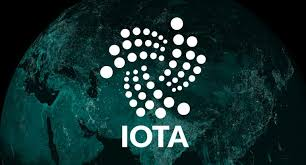
IOTA is a distributed MIOTA cryptocurrency platform based on a Tangle-controlled acyclic graph (DAG) technology. It was founded in 2015 by David Sønstebø, Sergey Ivancheglo, Dominik Schiener and Serguei Popov.
History
All IOTA founders have been in the blockchain environment since 2010. Some team members were responsible for the development of NxT, the first Proof-of-Stake blockchain. The very origin of this currency dates back to 2015. The main motivation and goal of its creators was to integrate blockchain technology into the "Internet of Things" (IoT), which would maximize the efficiency and security of payments made between devices supporting IoT. After the system was launched, the beta testing was completed, which was successfully completed in 2016. Subsequent to capturing all bugs and bugs, it was scanned in June last year on the first exchanges.
Over time, the market has ceased to consider it as a specialized network dedicated to the narrow range of IoT transactions. Gradually, this cryptomime has become competitive especially in the microplate field. Despite the fact that technology is still under development, the number of people willing to invest in this currency is rising.
milestones
2015 - More than 1,300 bitcoins were collected by ICO's creators in the project
2017 - SatoshiPay announced the transition from bitcoins to IOTA, as transaction costs have steadily increased with BTC
In the same year, the IOTA Foundation began working with REFUNITE. This is a missing persons database that searches for families broken down during conflicts using IOTA technology
Successful year 2017 ended this co-operation with companies such as Cisco, Volkswagen, Huawei and Samsung. German giant Robert Bosch also announced that he has invested a significant portion of this cryptomania within his funds.
At the beginning of 2018, the top of the cryptomeni came from the market capitalization. (at the time of writing this article is eleventh)
Fundamentals of IOTA and Tangle
To begin with, it has to be said that the mining of this currency is not possible and its total quantity is forwarded to 2,779,530,283 MIOTA. The uniqueness of this currency is also underlined by its specific blockchain, which the authors called Tangle.
The Tangle idea is as follows: The transaction that was sent to the network by the IoT device is confirmed only after the device verifies and confirms the two random transactions that were sent to the network earlier. Each transaction must therefore carry out the necessary number of verifications so that it can be confirmed. The whole process takes place almost immediately. Although there is a network overload, the level of unconfirmed transactions is enormously low. As a result, it never comes to such unconfirmed volumes as are typical of mempool bitcoin.
However, it is worth mentioning the disadvantages of this specific blockchain. Critics point out, in particular, the low computational power of individual nodes. Strong attack by specialized equipment would be able to break this system. However, if the number of processed transactions continues to grow, the potential integrity of the system should be increased. Simply put, the more establishments will work on the cryptomain principle, the greater the security of the entire network.
Flash and Flash Network
Flash is a bidirectional dedicated payment channel outside Tangle that allows instant transactions. Participants can communicate at high frequencies without waiting for confirmation of each transaction on the IOTA public network. As a result, there are only two transactions in the main network: opening and closing transactions in the Flash channel. Transfers outside Tangle have made developers reduce their overheads to negligible levels.
How it works
When a channel is created, each party inserts the same amount of this currency that will be checked by all parties. After confirming initial deposits, the channel does not require communication with the network until it is closed. After the transaction ends, the final balances will be posted on the network. This approach will allow thousands of transactions to be reduced to just two (entry and exit).
As there are no trappers in this cryptomimeter, the operation of the entire IOTA system is on a sufficient number of knots. As we said in the previous part, they are secured by the devices themselves, and even the developers have achieved free transaction.
IOTA vs MIOTA
IOTA is the smallest unit of this currency. Due to the relatively large number of these units, developers have designed multiples that are defined as follows:
1000 IOTA- kiloiota
1 000 000 IOTA - MIOTA (the most commonly used shape)
1 000 000 000 IOTA - gigaiota
The total amount of coins is 2,779,530,283,277,761, which is about 2.78 billion MIOTA.
benefits
is based on a controlled acyclic graph (DAG) called Tangle
there is no mining in the system
no transaction fees
fixed supply
fast transcation
it is not just a menu but also a protocol to ensure the functioning of IoT devices
IOTA is an incredibly ambitious and interesting project. The number of devices connected to the Internet is constantly growing, making IoT one of the key sectors for the future. According to some studies, 20 to 30 billion devices will be involved in IoT, making this name a pillar for this industry.
summary:
Name: IOTA
Currency Code: MIOTA
Origin: 2015
Supply: 2 779 530 283 277 761 (2 779 530 283 MIOTA)
Official wallet: IOTA Wallet
Storage option in wallets hardware: no
Where To Buy:
List of exchanges and exchanges on which IOTA is listed:
Bitfinex
Binance
Coinone
OKEx
Exrates
Gate.io
CoinFalcon
Contacts:
Official Website: https://iota.org/
Facebook: https://www.facebook.com/iotacoin/
Twitter: https://twitter.com/iotatoken
Reddit: https://www.reddit.com/r/Iota/
Forum: https://forum.iota.org/
Telegram: https://telegram.me/iotatangle

Thank you very much for your support!
I just up-voted you! Please vote my posts